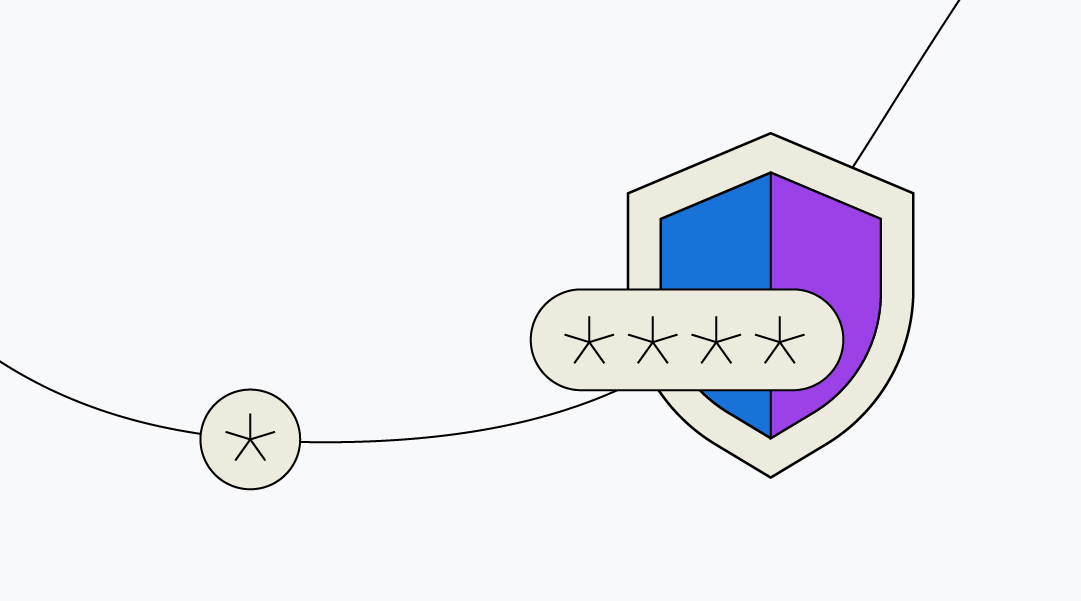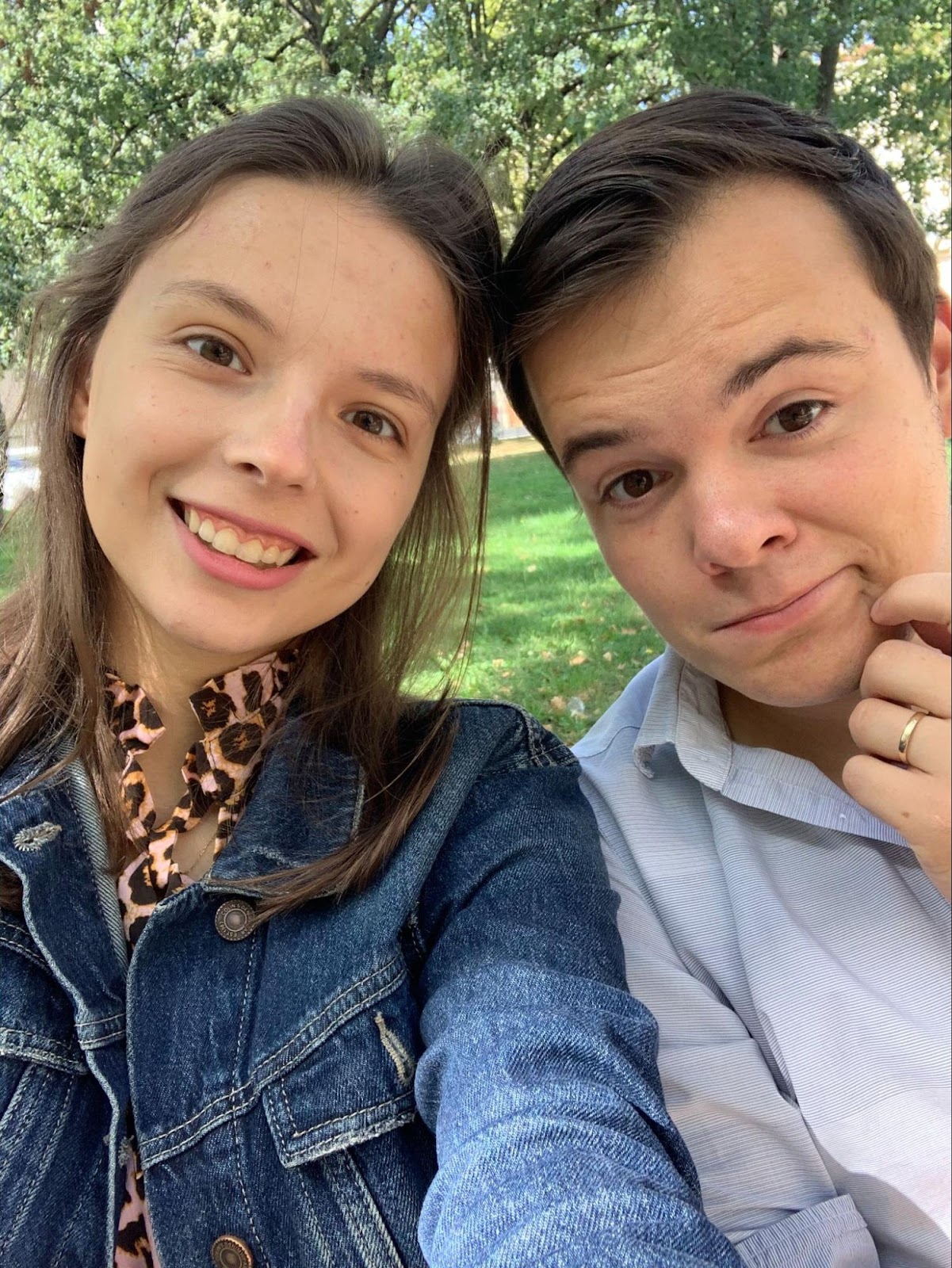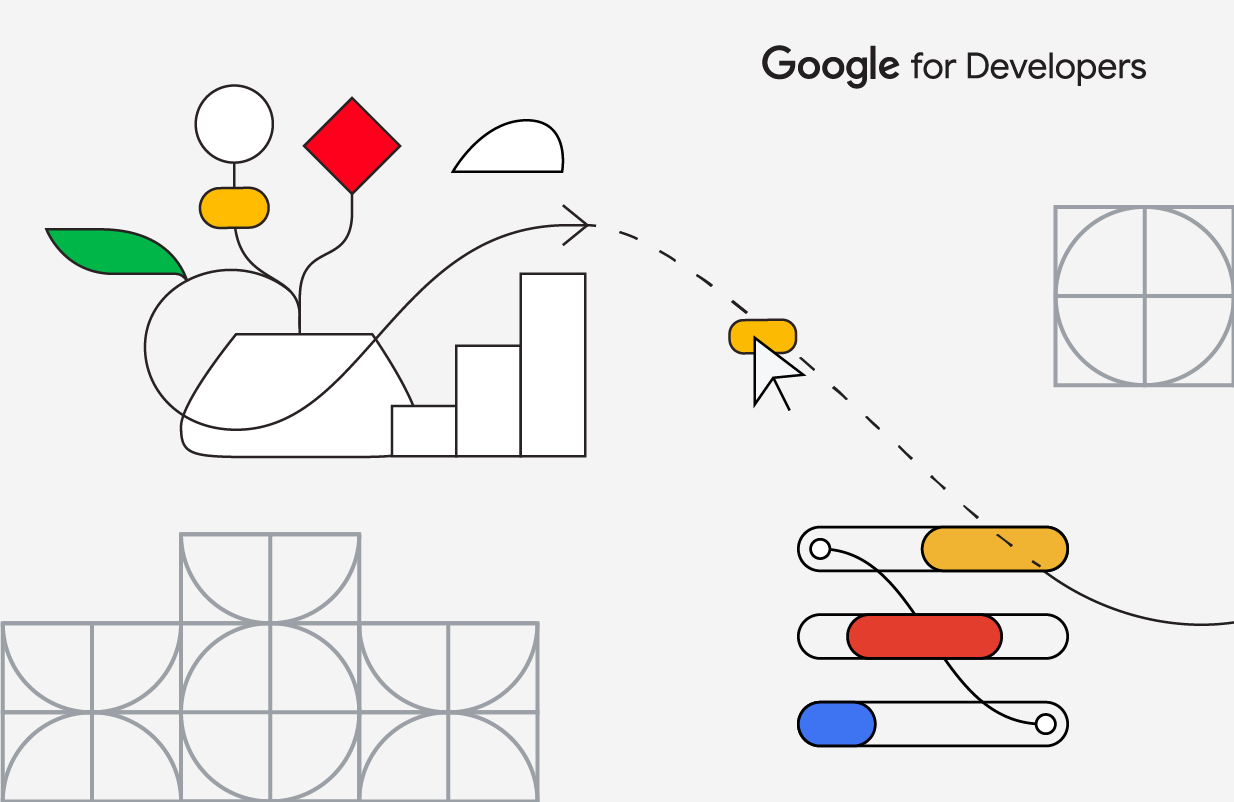 Posted by Lyanne Alfaro, DevRel Program Manager, Google Developer Studio
Posted by Lyanne Alfaro, DevRel Program Manager, Google Developer Studio

Developer Journey is a monthly series highlighting diverse and global developers sharing relatable challenges, opportunities, and wins in their journey. Every month, we will spotlight developers around the world, the Google tools they leverage, and the kind of products they are building.
This month we hear from developers who are
Google Developer Experts and former
Google Developer Student Clubs members building tools to enhance food delivery, developer playgrounds, and even real-time BPM counters for DJs. We also ask our community members about the role of allyship during Pride Month.
Yves Kalume
Lubumbashi, Democratic Republic of Congo
Google Developer Expert, Android
GDSC Alumni
Android Developer
What was your experience with Google Developer Student Clubs like and how did it help you get to where you are today?
For me, GDSC was a kind of starting point for this adventure. As an introvert, I initially struggled to connect with others, but being part of a larger group motivated me to step out of my comfort zone. I gained confidence in myself and my ability to make a positive impact on others.
What I love most about Google Communities is the emphasis on human relationships. Collaborating with other leads and learning from one another is integral to driving our communities forward. Even now, I enjoy the ongoing exchange among alumni.
Which tool has been your favorite? Why?
I'm an Android Developer by profession and I use Google tools on a day-to-day basis, starting from AndroidX libraries, Google Play Services, Jetpack Compose and more. At a company where I worked previously, I spent a lot of time working with Firebase and Google Cloud.
What Google tools have you used to build?
Jetpack Compose is hands down my favorite tool to build an Android app since it provides an intuitive way of building a user interface that saves me time and effort. Before that, I was not really friends with UI designers. Creating UI was a chore, but Jetpack Compose is a game-changer.
Tell us about something you've built in the past using Google tools.
I’ve been working on an application called Be Served at Zx Connect. The goal is to make life easier for users by offering services like goods and food delivery.
The app is entirely written in Kotlin and uses modern tools like Jetpack Compose, architecture components, and Google Cloud Platform, which help us build scalable solutions. They easily improve and add features based on customers’ feedback.
What advice would you give someone starting in their developer journey?
The first step is often the hardest. The best way to persevere is to find people who are like you, who have been where you are and who can inspire you. The best place to be is in a developer community by attending meetups and being active.
Another important piece of advice is to find a specific area and focus on it. Practice is the best way to understand a concept; learn by doing, and never neglect basics.
Becoming a better developer takes time and effort: stay passionate and trust the process.
What is the role of allyship in the tech industry during Pride Month?
We have a responsibility to educate ourselves and others about the issues facing marginalized communities, to speak out against discrimination and prejudice, and to actively work towards creating a more diverse, inclusive, and equitable workplace.
The role of allyship in the tech industry during Pride Month is crucial, but it should not be limited to just one month. It's about creating a culture of acceptance, respect, and support all year round.
Let’s all commit to being allies every day, not just during Pride Month (or Black History Month), and let us work together to create a better world for all.
Maxim Salnikov
Oslo, Norway
Google Developer Expert, Web Technologies and Angular
Developer Engagement Lead in Microsoft
Which tool has been your favorite? Why?
I'm currently a big fan of the Workbox library. I've used it to build all my recent progressive web apps, which require core PWA capabilities like offline readiness. I've given a lot of tech talks and workshops on Workbox because I want to introduce it to as many developers as possible.
I strongly believe that installability, connection resilience, and proper integration with the underlying platform are essential components of modern web frontend applications. Building a service worker from scratch to provide these features can be challenging, as there are many nuances and things to consider to avoid ruining your app in production.
Workbox provides the perfect balance of abstraction for the core entities you need to optimize networking, while still giving you full control over your service worker behavior. It's a stable and mature library that's actively supported by the community.
What Google tools have you used to build?
In my 20 years of being a developer, I've used many tools from Google. But what really drew me to the communities, conference organizing and technical speaking was the Angular framework. I was instantly in love with the technical side of it - it was a huge step forward for web development, allowing for the creation of frontend apps using some really cool backend techniques.
I also appreciate the developer community around it. They focus on sharing knowledge and tools, helping out new people, and being welcoming and positive. After attending a few Angular events organized by the community, I became a co-organizer of the Norwegian Angular meetup, and co-founded the Nordic Angular conference: ngVikings. We had three in-person events in Denmark and Finland, and one online event with thousands of participants. Nowadays, I use multiple frameworks for my hobby and side projects, but I'm still an active member of the Angular ecosystem.
Tell us about something you've built in the past using Google tools.
My recent projects that use Workbox for the service worker automation include:
I built it for my own live performances and share it with the global community of DJs and music producers.
Web Push is one of my favorite features of progressive web apps. I actively explore it from the development and UX perspective, and present my findings.
I am an active member of the generative AI community. This is my way of contributing to the creation of a healthy and united community around AI and LLM fields.
They are all open source, so I would appreciate any comments or pull requests!
What advice would you give someone starting in their developer journey?
- Learn the fundamentals. Take the time to learn the basics of coding, such as HTML, CSS, and JavaScript. These are the building blocks of web development and will give you a solid foundation for further learning.
- Practice. The best way to learn is to build things. Find projects to work on and practice coding.
- Don't be afraid to ask questions. Asking questions is the best way to learn and grow as a developer.
- Get involved in the developer community.
What is the role of allyship in the tech industry during Pride Month?
There are many initiatives that allies can organize and support. We also should be creating a safe and inclusive environment for everyone and promote diversity and inclusion in the workplace.
Radostin Cholakov
Plovdiv, Bulgaria
Machine Learning Researcher, Obecto Ltd.
Which tool has been your favorite? Why?
My favorite Google tool is TensorFlow, as it has extensive support for a wide range of applications, from tabular modeling and graph neural networks to computer vision or natural language processing. The ability to build, train, and fine-tune complex neural networks using TensorFlow has significantly accelerated my research. Its easy integration with other technologies has made it an essential part of my development process.
Also, I love serverless and use Google Cloud Functions in nearly all my projects! I'm excited that during I/O this year, Python support was introduced in Firebase Functions as well.
What Google tools have you used to build?
I have used a variety of Google tools in my projects, including TensorFlow, Google Cloud Platform (GCP), Firebase, and Flutter. They enable me to create powerful machine learning models, deploy, manage them at scale, and to build user-friendly interfaces to serve their applications across all platforms.
Tell us about something you've built in the past using Google tools.
One notable project I have built using Google tools is the Bulgarian NLP platform "AzBuki.ML". I used TensorFlow to develop several state-of-the-art natural language processing models specifically tailored for the Bulgarian language. These models were hosted on the Google Cloud Platform and served through web and mobile applications built with Angular, React, or Flutter and hosted on Firebase Hosting.
In the past two years, I have been actively conducting research in machine learning as well. I have used the developer resources by Google to extend my theoretical studies to usable software libraries or at least provide tutorials to interested developers on applying state-of-the-art techniques for auxiliary learning, contrastive learning, tabular modeling, and autoregressive text generation in their work. These include:
- The GatedTabTransformer: A state-of-the-art deep learning tabular classification architecture inspired by TabTransformer with integrated gated multilayer perceptron. I recently gave a talk on how it can be used together with the TF-DF library for robust tabular classification and regression.
- RSTOD: Novel auxiliary tasks for task-oriented dialogue systems. The study has been peer-reviewed and is available in the ACL Anthology.
What advice would you give someone starting in their developer journey?
- Start your developer journey with curiosity and continuous learning. Resources for computer programming and machine learning are easily accessible, allowing growth at your own pace, from anywhere, at any time, and at any age.
- Use online courses, tutorials, forums, and blogs to learn and connect with developer communities.
- Collaborate on projects, exchange ideas, and gain insights, support, and mentorship from these networks.
- Work on open-source projects that you're passionate about to enhance your problem-solving skills through hands-on experience and engage with the developer community to gain valuable experience or forge connections.
What is the role of allyship in the tech industry during Pride Month?
By embracing allyship, we can help create a more inclusive and innovative tech industry that benefits everyone.


 Posted by Brian Hall, Vice President, Product and Industry Marketing, Google Cloud & Max Saltonstall, Developer Relations Engineer
Posted by Brian Hall, Vice President, Product and Industry Marketing, Google Cloud & Max Saltonstall, Developer Relations Engineer

 Posted by Danny Rozenblit, Developer Marketing
Posted by Danny Rozenblit, Developer Marketing





 Posted by Alexandra Dumas, Head of VC & Startup Partnerships, West Coast, Google
Posted by Alexandra Dumas, Head of VC & Startup Partnerships, West Coast, Google




 Posted by Leticia Lago, Developer Marketing
Posted by Leticia Lago, Developer Marketing




 Posted by Iran Karimian, Startup Ecosystem Lead, Canada & Matt Ridenour, Head of Startup Ecosystem, U.S.
Posted by Iran Karimian, Startup Ecosystem Lead, Canada & Matt Ridenour, Head of Startup Ecosystem, U.S.
 Posted by Avneet Singh, Product Manager and Sisi Jin, UX Designer, Google PI, and Lance Carr, Collaborator
Posted by Avneet Singh, Product Manager and Sisi Jin, UX Designer, Google PI, and Lance Carr, Collaborator





 Posted by Komal Sandhu - Global Program Manager, Google Developer Groups
Posted by Komal Sandhu - Global Program Manager, Google Developer Groups






 Posted by
Posted by 


